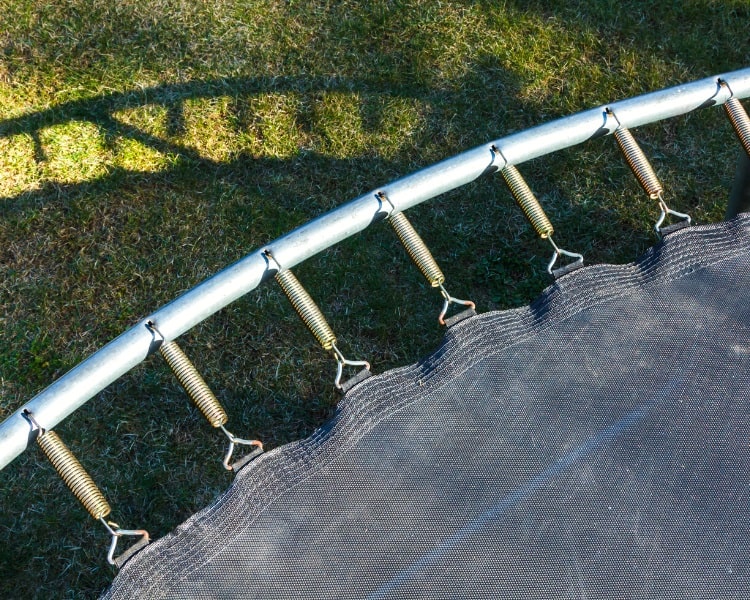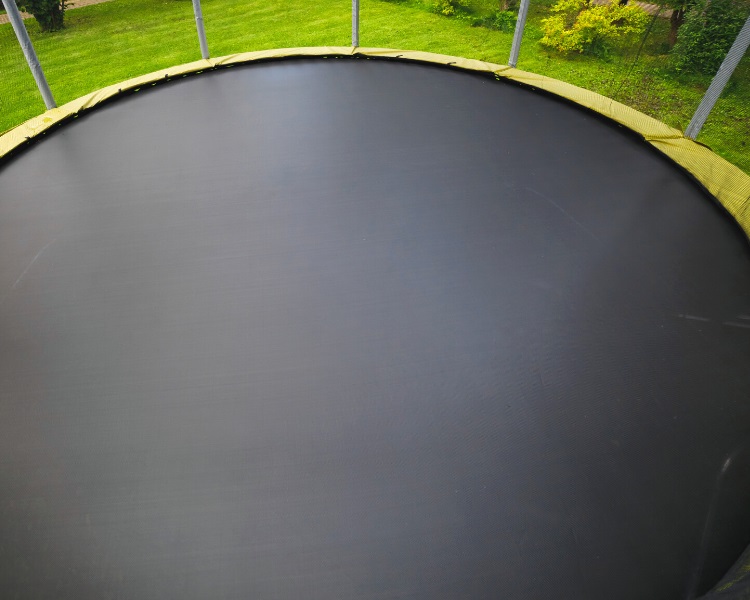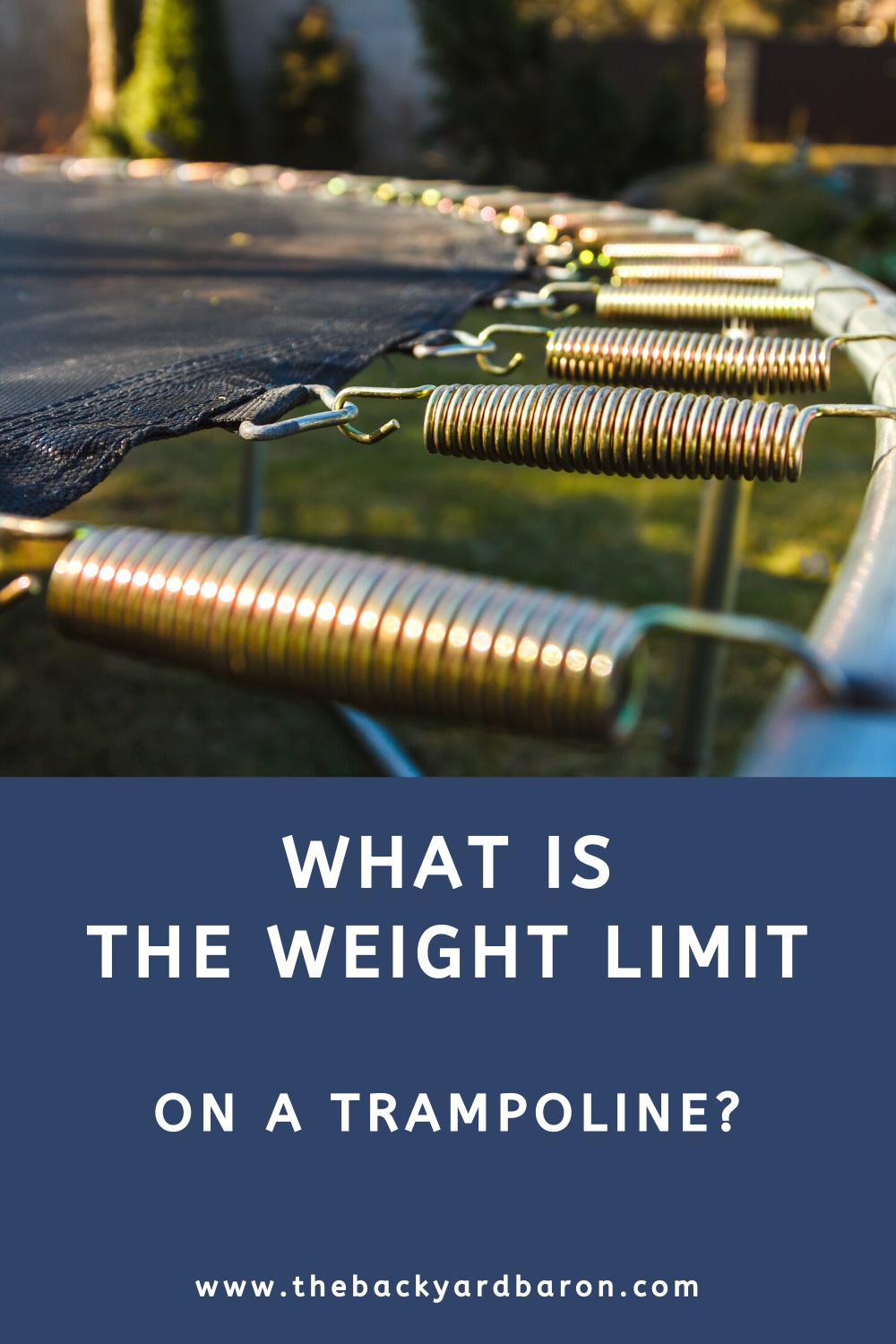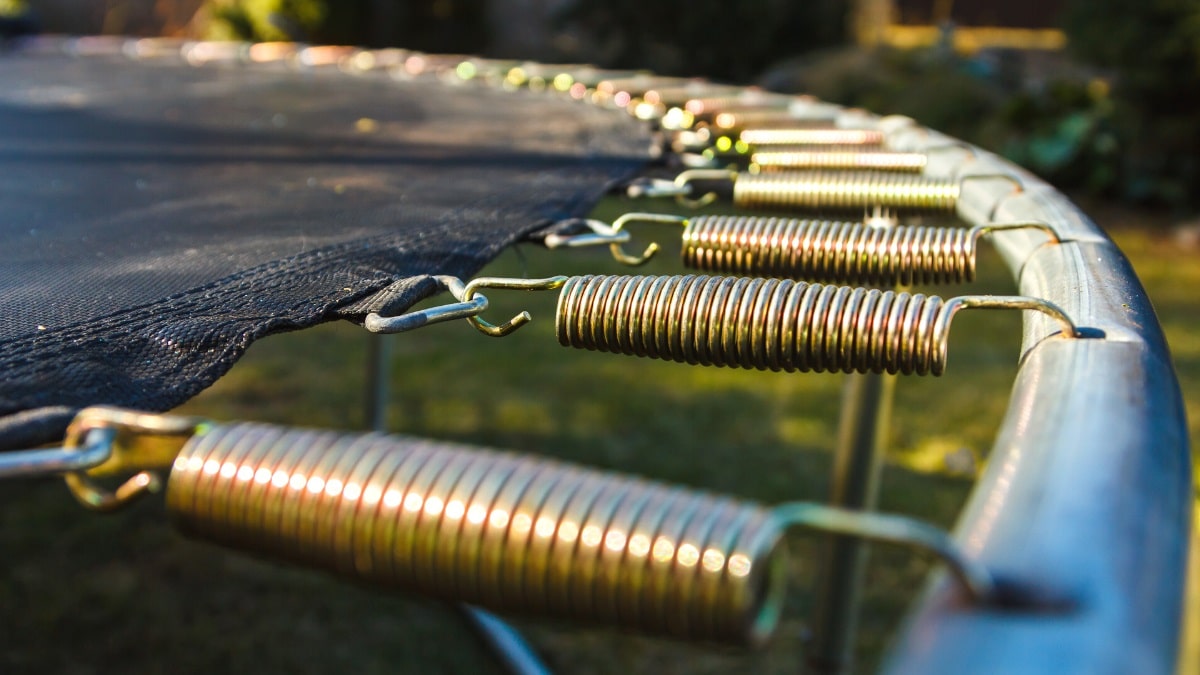Last updated: February 21, 2024
What is the weight limit on a trampoline, and how is it established? This guide explains the logic behind trampoline weight limits.
Trampolines offer lots of fun for both kids and adults, and weight limits will help keep everyone on a trampoline as safe as possible. But what determines the weight limit on a trampoline?
The size and shape of a trampoline, as well as the materials involved, have an impact on how much weight a trampoline can handle, and each trampoline will have different guidelines.
In this article, I will discuss the somewhat mysterious concept of a trampoline’s weight limit.
A Trampoline’s Weight Limit Explained
Before we continue, let me emphasize that you should always check the manufacturer’s product recommendation for the exact weight limit specifications for your backyard trampoline model.
Why Are Trampoline Weight Limits Important?
Some might think that a weight limit for a trampoline exists to prevent the mat from bursting.
While there is truth in that thought, the other important reason to have a weight limit on a trampoline is to avoid the mat touching the ground or surface when jumping, which obviously can be quite dangerous.
For instance, if a trampoline’s weight limit is set at 500 pounds, then that guideline tells you that it’s safe for the combined weight of all jumpers, or anything on the trampoline, to reach 500 pounds.
Note that there can be two types of trampoline weight limits:
- Weight limit per person
- Total weight limit
The weight limit per person refers to the maximum weight limit for one person. If that limit is set at 250 pounds, then no one jumper should be heavier than 250 pounds.
The total weight limit is the maximum weight the trampoline can handle at one time.
Weight Limit Testing
The American Society for Testing and Materials (ASTM) requires that a trampoline should be able to withstand up to four times the weight limit.
In other words, if a trampoline’s weight limit is set at 200 pounds, then that trampoline needs to be able to hold a weight of 800 pounds during testing.
Please note, though, that not all trampoline manufacturers are required to pass these ASTM trampoline tests. So don’t expect all backyard trampolines to be able to hold four times the recommended weight limit, and definitely don’t try and test that at home.
However, one of the better-known trampoline manufacturers, Skywalker, does run its trampolines through ASTM tests to ensure they meet the highest safety standards.
Factors that Determine a Trampoline’s Weight Limit
There are a few factors that come into play when determining a backyard trampoline’s weight limit:
- The Springs
- The Frame
- The Mat
- The Shape
- The Size
Let’s discuss these factors in a bit more detail.
1. The Springs
This may come as a surprise, but the springs of a trampoline handle the majority of the weight when someone is jumping. It’s not the mat; it’s not the frame; it’s the springs.

Most springs are made of steel, making them stronger and able to hold more weight. Some steel springs are also galvanized, which further improves the weight capacity.
Also note that the springs are not only the most crucial part of a trampoline but also the most vulnerable. So, it’s essential to regularly check them for any damage and rust.
2. The Frame
Similar to the springs, the frame of a trampoline is typically made of steel to ensure the trampoline is as robust as possible. But a solid steel frame also helps with managing weight.
Depending on their design, frames can certainly buckle when too much pressure is applied. It’s typically the legs of the frame that are the most vulnerable.
3. The Mat
Of course, the mat of the trampoline also plays a huge role when it comes to handling weight. Or rather, the materials that the mat is made of.
A trampoline mat consists of woven fabric, so there’s only so much a trampoline mat can handle when pressure (from jumping or any weight) is applied.

The more weight on the mat, the more it will bend towards the ground, and the more chance that tears will start to pop up. This is why setting a weight limit is important to avoid too much bending and tearing up.
Check out my guide to fixing holes in trampoline mats and also my guide to cleaning trampoline mats for some practical tips on mat maintenance.
4. The Shape
The shape of the trampoline is also a factor, although most backyard trampolines are round-shaped these days.
Though circular trampolines allow for perfectly even weight distribution, rectangular trampolines usually have higher weight limits. Most round trampolines top out at about 350 pounds, and rectangular trampolines typically handle up to 500 pounds unless they’re very small.
Those numbers can, of course, change if the trampolines are much smaller or larger than your typical backyard models.
Check out my guide to trampoline shapes for an outline of the different types of backyard trampolines available.
5. The Size
The size is also a factor, with larger trampolines typically allowing for higher weight limits than smaller ones.
Some smaller trampolines can have weight limits of less than 100 pounds. There are also smaller adult trampolines that are used for exercise, known as re-bounders, and these exercise trampolines can have surprisingly large weight limits of up to 300-400 pounds.
Here are some average user weight limit numbers for backyard trampolines:
- 13 feet: 250-300 lbs
- 15 feet: 300-350 lbs
- 17 feet: 350-400 lbs
Final Thoughts
As I mentioned above, it’s always best to stick with the manufacturer’s instructions and guidelines when it comes to your trampoline’s weight limit.
Also note that the age of the trampoline and the amount of exposure it’s had to sun and extreme temperatures can negatively impact that weight limit and other safety aspects of your trampoline.
Common sense goes a long way; always respect your trampoline’s safety guidelines, and don’t try to push your trampoline to its limits.

